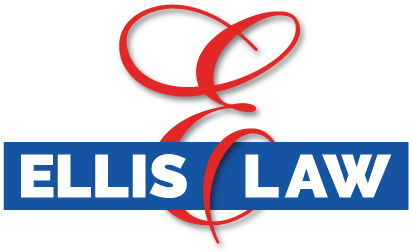Traffic control devices play a vital role in ensuring the safe, efficient movement of vehicles and pedestrians. These signs, signals, markings, and other devices are used to regulate, warn, or guide traffic. We are all used to seeing them every day, but when drivers do not follow them, they can get tickets.
Traffic control devices can be categorized into three main types:
- Traffic signs provide information about road conditions, traffic regulations, and directions. Examples include stop signs, yield signs, and directional signs.
- Traffic signals control vehicle and pedestrian movement through the use of lights, like the ones you see at intersections.
- Pavement markings include lines, arrows, and symbols painted on the road surface to direct and regulate traffic. These include lane lines, crosswalks, and turn arrows.
How Do Traffic Control Devices Improve Road Safety?
Traffic control devices promote road safety, through clear instructions and information to drivers and pedestrians. They help prevent accidents by controlling traffic flow. These devices also reduce confusion and potential conflicts at intersections and crossings, and enhance the overall efficiency of the transportation system.
What Regulations Govern the Use of Traffic Control Devices?
Traffic control devices must conform to standards set by governmental authorities. In the United States, the Manual on Uniform Traffic Control Devices (MUTCD) provides guidelines for their design, installation, and maintenance. Adhering to these standards maintains consistency and clarity.
What Are Some Common Traffic Signs and Their Meanings?
Here are the most common traffic signs:
- Stop signs require drivers to come to a complete stop and proceed only when it is safe.
- Yield signs instruct drivers to slow down and yield the right-of-way to other vehicles or pedestrians.
- Speed limit signs show the maximum legal speed a vehicle can travel on a particular stretch of road.
- No entry signs prohibit vehicles from entering a roadway or area.
How Do Traffic Signals Work?
Traffic signals use a system of colored lights—red, yellow, and green—to control vehicle and pedestrian movement at intersections. Each color has a specific meaning.
- A red light requires vehicles to stop and remain stopped until the light changes.
- A yellow light warns that the light is about to change to red, advising drivers to prepare to stop.
- A green light allows vehicles to proceed through the intersection or make turns, provided it is safe to do so.
What Are Pavement Markings and Their Functions?
Pavement markings serve various functions:
- Lane lines separate traffic moving in the same direction or in opposite directions.
- Crosswalks indicate areas where pedestrians may safely cross the road.
- Arrows guide drivers on the correct lanes to use for turning or continuing straight.
- Stop lines indicate where vehicles must stop at intersections or railroad crossings.
Why Are Traffic Control Devices Important for Legal Matters?
Compliance with these devices can affect the outcome of legal proceedings related to traffic violations, personal injury claims, and other road-related cases. Traffic control devices can also be central to traffic law enforcement and legal cases involving car accidents. Understanding their placement, visibility, and function helps determine liability.
Who Is Responsible for Installing and Maintaining Traffic Control Devices?
Local, state, and federal authorities share the responsibility for installing and maintaining traffic control devices. The specific agency responsible depends on the type of road and jurisdiction. Ensuring these devices are properly maintained is key to keeping roadways safe and functional.
What Should You Do If You Encounter a Malfunctioning Traffic Control Device?
If you encounter a traffic control device that is not functioning correctly, such as a broken traffic light or a missing sign, it is important to report it to the local transportation or public works department. Malfunctioning devices can create hazardous situations and need prompt attention to prevent accidents.
Contact the Freehold Ticket Lawyers at Ellis Law for Legal Assistance
If you have received a traffic ticket and need legal assistance, contact Ellis Law. Our skilled Freehold ticket lawyers offer free consultations and are ready to help. Submit our online form or call 732-702-6103. Located in Freehold, New Jersey, we serve clients in Asbury Park, East Brunswick, Toms River, Middletown, Jersey City, Long Branch, Neptune, Hudson County, Union County, Essex County, Monmouth County, Marlboro, and Ocean County, as well as Brooklyn and New York City.





